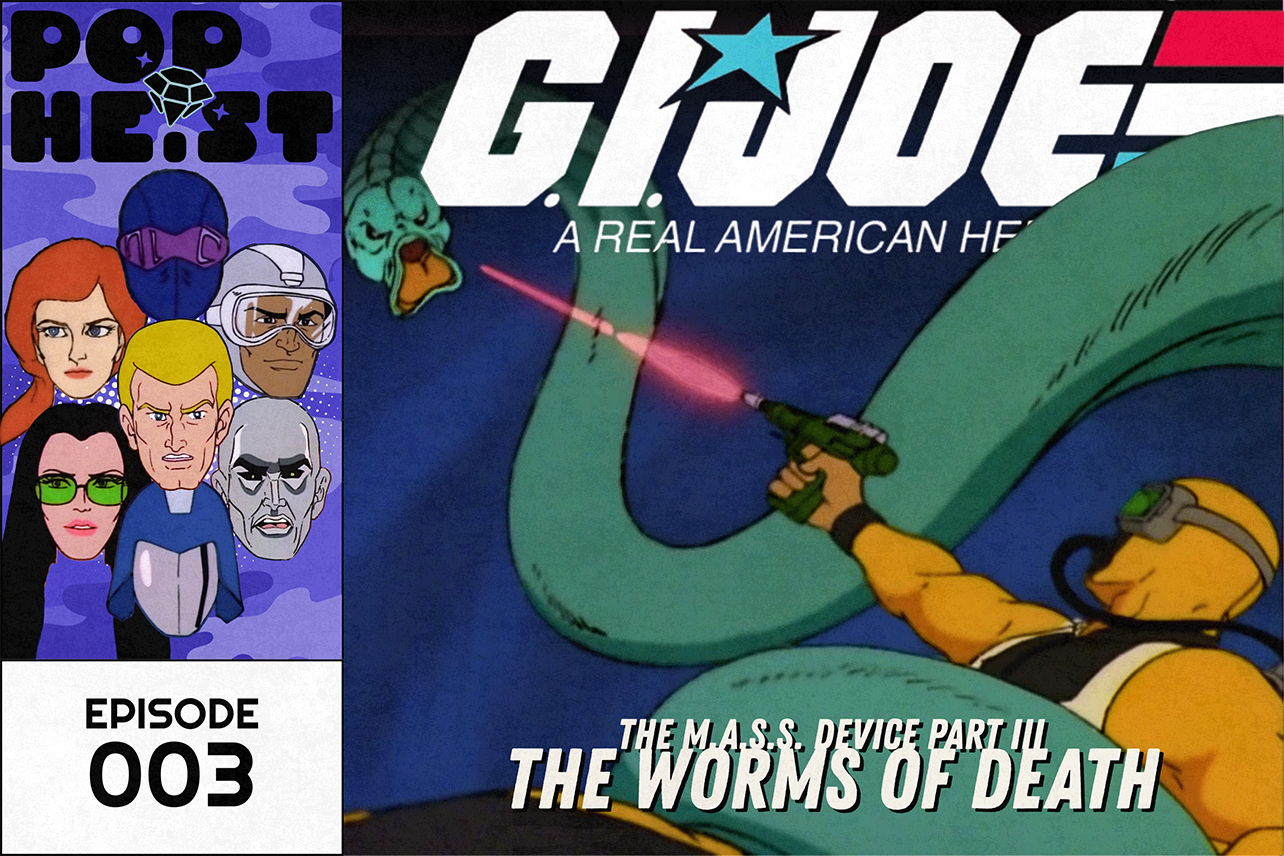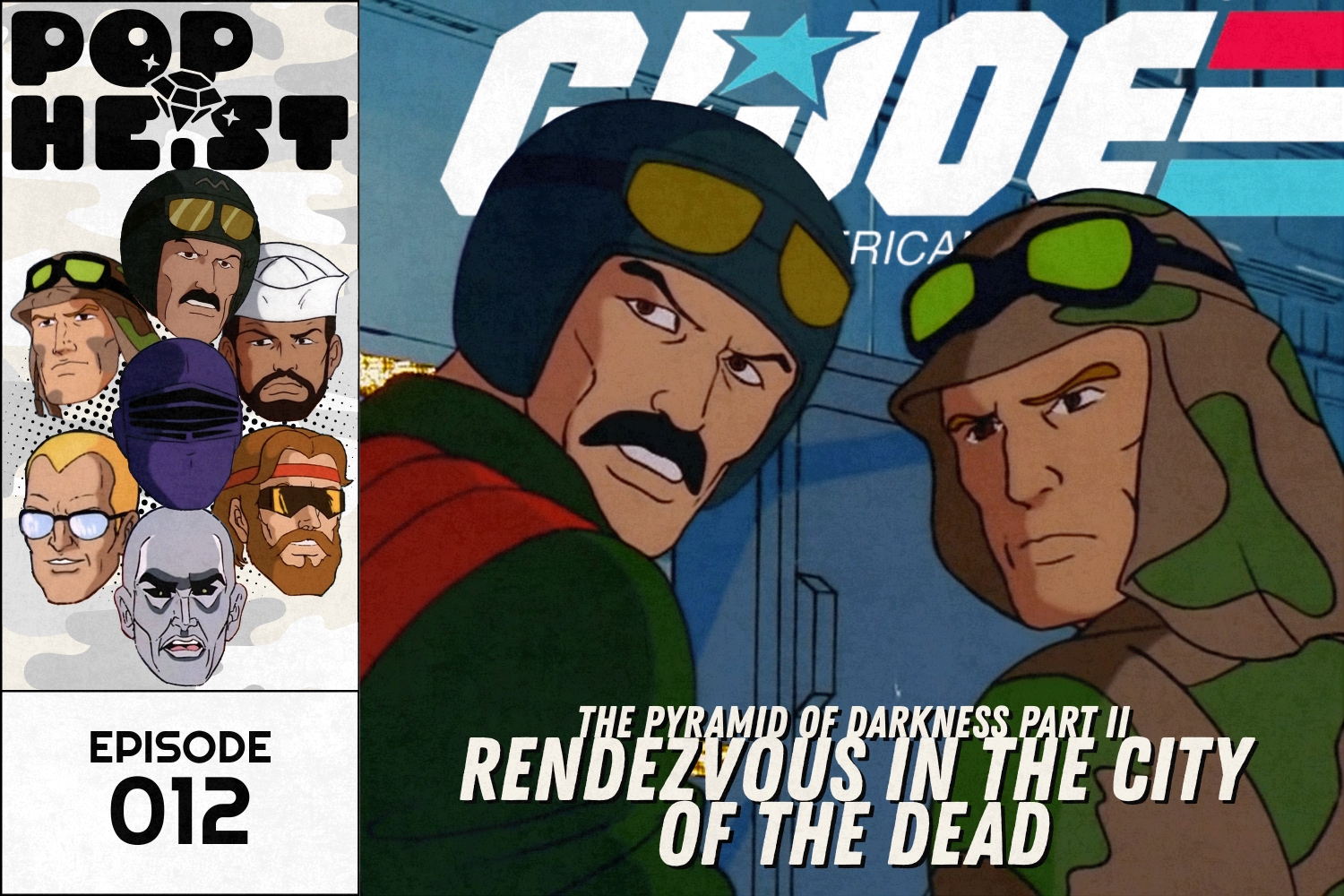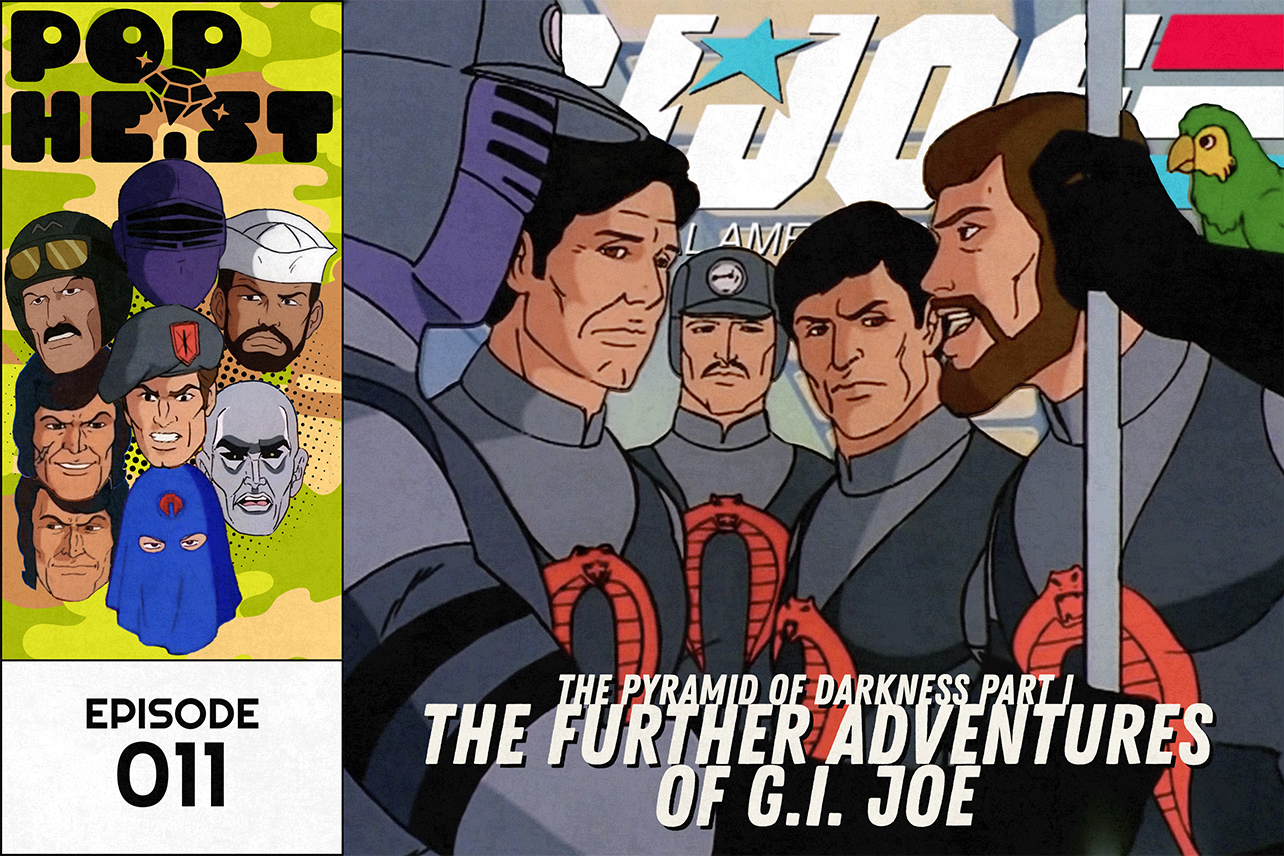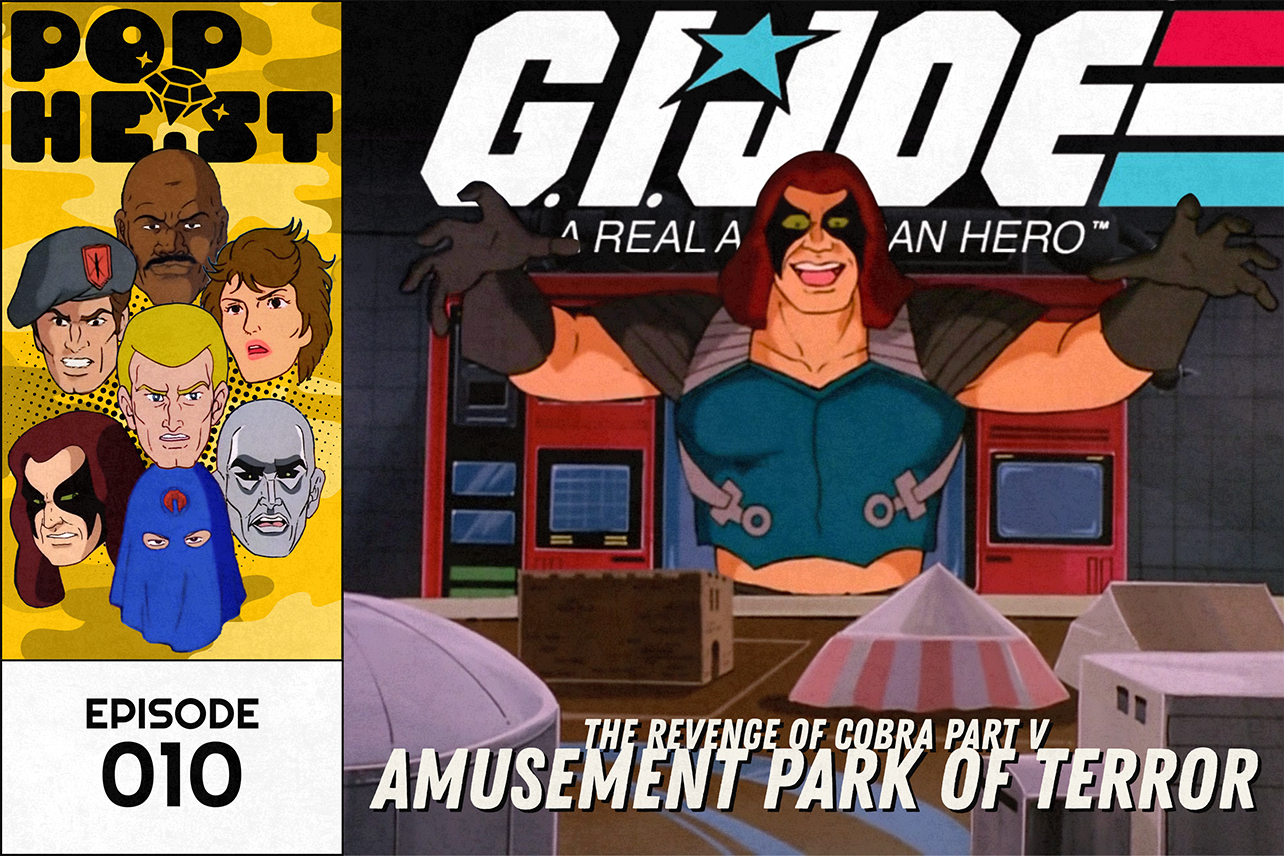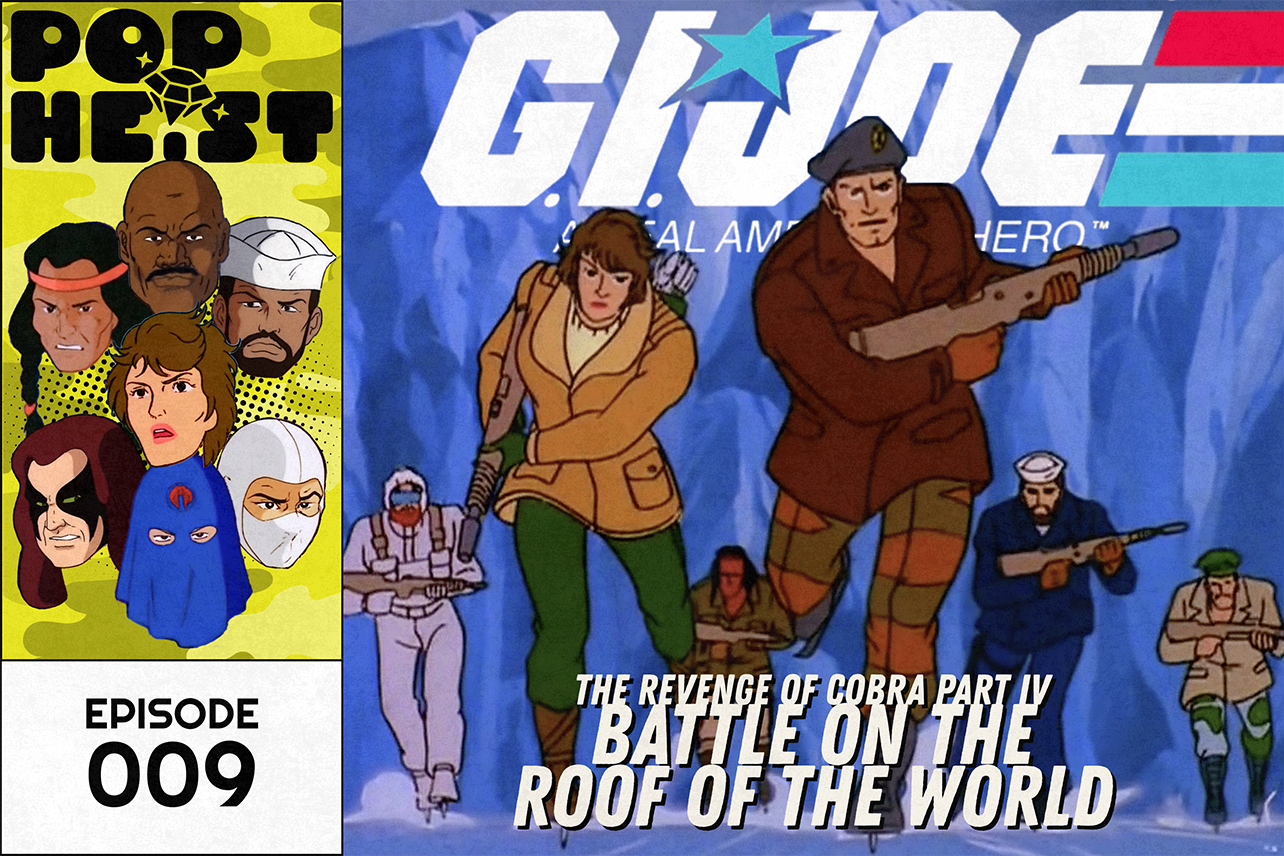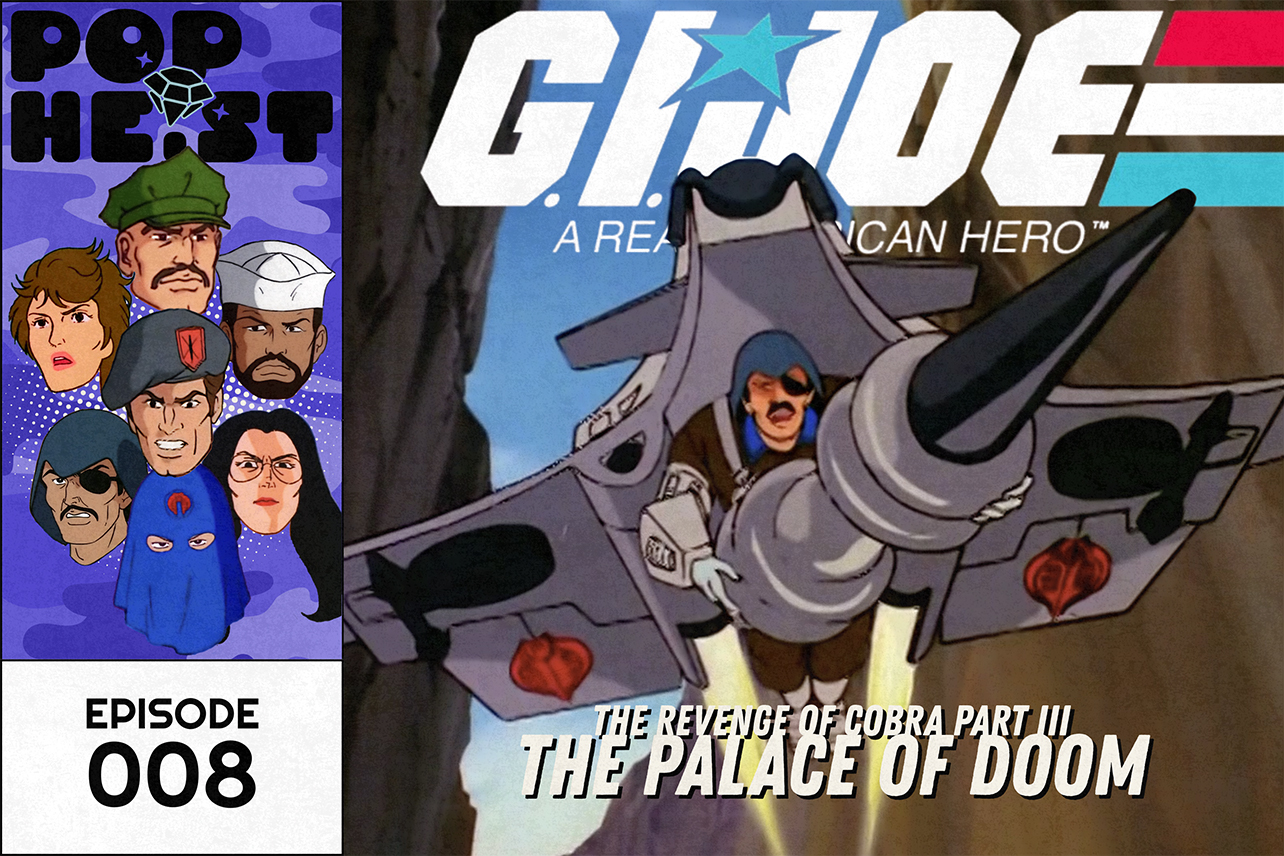G.I. Joe: A Real American Hero Mini-Series 1, Episode 3
"The M.A.S.S. Device Part 3: The Worms of Death"
Original Airdate: September 14, 1983
Writer: Ron Friedman
Director: Dan Thompson
Cast: Michael Bell, B.J. Ward, Michael Yama, Arthur Burghardt, Morgan Lofting
I recently read all 155 issues of Marvel's G.I. Joe: A Real American Hero comic, the one that launched the franchise in 1982, the one with the commercials. And I did so in a super compressed time, over a couple of weeks. The one constant through those core 155 issues that were published during the modern heyday of G.I. Joe (1982-1994), is the word "realism." Every single letters page has at least one missive from a reader about how G.I. Joe had lost touch with reality, how they yearned for the comic to return to its gritty roots. More death, please! More "realism."
Meanwhile, Episode 3 of G.I. Joe: A Real American Hero features the team diving to the depths of the ocean in search of "heavy water" and fighting off a clew of man-eating, Acela-sized tube worms. When, exactly, was G.I. Joe tethered to reality? This is why I love this show.
As that little tease suggests, "The Worms of Death" is the first truly unhinged episode of G.I. Joe: A Real American Hero, an episode that goes so hard it out-weirds the toyline for no reason. We start with Cobra Commander (Latta), whose willy-nilly use of the M.A.S.S. Device — teleporting world leaders, armies, and architectural marvels around like they ain't nothing — is rapidly draining their supply of catalytic elements. This is really testing Destro's (Burghardt) patience, so much so that he punches a hole in what looks like a solid steel wall. But, Baroness (Lofting) points out, Maj. Bludd (Bell) is still in the arctic, victorious after forcing a team of Joes to flee without any of the vital radioactive crystals.
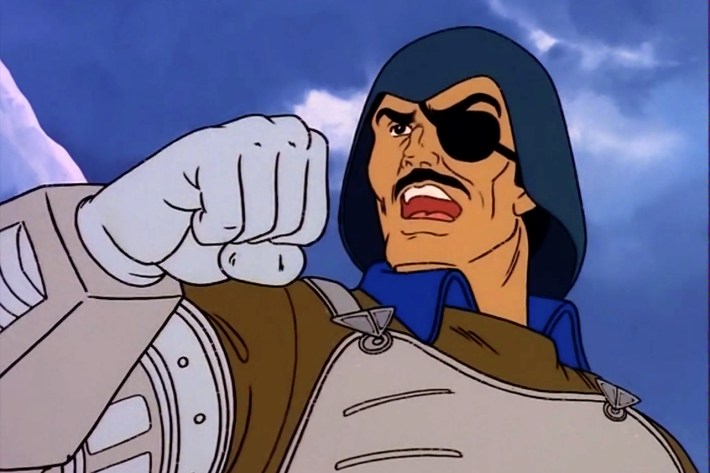
I can't believe I'm saying this, but Maj. Bludd is the most effective member of Cobra as of right now. He successfully destroyed the Joes' fleet of Skystrikers [1983 retail: $14.95] and he scores a canister of radioactive pop rocks for his team. Cobra begrudgingly tolerates Bludd's awful poetry readings because the man delivers.
Bludd's successful excavation was, however, briefly interrupted by one radioactive commando. After locking himself in the cave with the radioactive gas, we see that Snake Eyes is alive, albeit glowing with radiation like he's Sunspot and carrying the Joes' canister of crystals like it was the most dangerous holiday popcorn tin ever. There's an intentionally awkward moment when Snake Eyes emerges, literally radiating bright red death, and all the Cobra troops freeze and give him the widest berth. It's very, "I would do anything for fascism, but I won't do that," "that" being "give myself radiation poisoning."
So Snake Eyes keeps walking, alone, lost in the arctic — but kids clutching their Snake Eyes filecard weren't worried. It specifically mentions that he has extensive training in arctic survival. Snake Eyes then comes across a wolf whose paw is stuck in a trap. He considers leaving the wolf behind, but instead turns around and frees the creature. A bond is forged. Snake Eyes is altruistic to a fault, although he maybe irradiated the wolf.
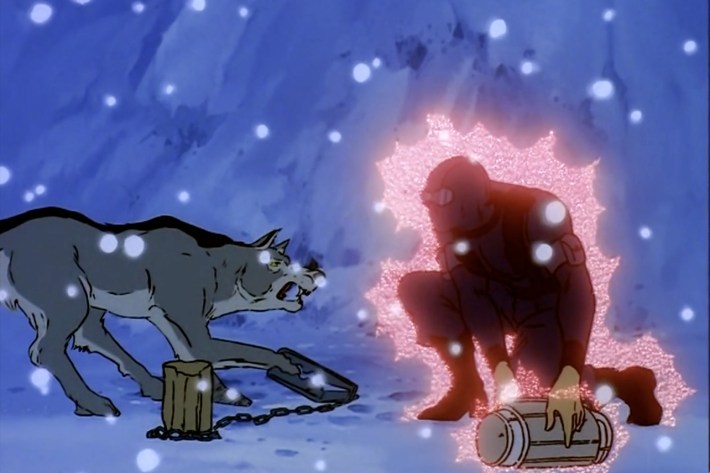
And like an elf who longs to be a dentist, Snake Eyes keeps wandering through the snow until he encounters a true beast: a polar bear that has to be at least 16 feet tall. A female adult polar bear can grow as tall as eight feet, so ... uh, realism! The wolf, understanding how life debts work, attacks the bear but is swatted away. Then a green crackle of electricity shocks the bear, causing him to vamoose. It's electricity from a high-tech cattle prod, wielded by a ... blind, Odin-looking old man (John Stephenson) with a sleigh, six dogs, and no name.
This is where things get very Bride of Frankenstein. Even in an episode that's about to go careening off the rails and into outer space for no reason, Ron Friedman still finds the time to flesh out — and humanize — the most enigmatic of all the Joes. Okay, the scene starts with the blind man ridding Snake Eyes of the radiation with "a simple dressing of leaves and herbs," which is then burned in his humble cabin's fireplace. The impression I get from this episode, where plotlines are treated more like suggestions, is that Friedman probably wasn't a fan of outlining. Or second drafts. Or notes.
But. Snake Eyes. Let's finally dig into the most popular of all Joes. The reason Snake Eyes even exists is because of a cost-cutting workaround by Hasbro to keep the first line of G.I. Joe figures profitable. They took the commando figure, which designer Ron Rudat modeled after British Special Air Service troops (which were in the zeitgeist in the early '80s due to the Iranian Embassy siege; zeitgeists lasted a lot longer pre-internet) and removed all paint application. The figure, named "Commando," would be molded in black plastic and done. When it came time to write the filecards, Larry Hama tossed the name, dubbed him "Snake Eyes," and leaned into the all-black look by making him a ninja. (You can hear this story told by G.I. Joe product manager Kirk Bozigian on 3DJoes.)
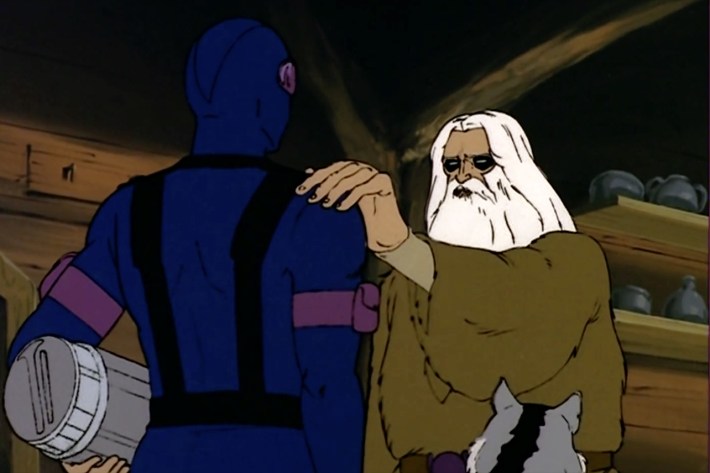
Snake Eyes' side quest — sacrificing himself for his teammates, rescuing a hurt wolf, accepting kindness from a blind snow viking — it adds dimensions, a vulnerability and sensitivity, to a character that could very easily just be a badass. And the fact that Snake Eyes is fully out of uniform, albeit off screen, only adds to his mystique. The old man then hands Snake Eyes the tin of radioactive crystals that he dropped when that jacked polar bear swatted him, names Snake Eyes' new wolf friend Timber, and then Snake and Timber part ways with this mysterious man.
The G.I. Joe team's plot begins with Duke (Bell) wearing a Cerebro helmet, undergoing a kind of brain rehab as he tries to remember what he forgot while a prisoner of Cobra. I get it, you've seen one underground arena, you've seen them all. And as soon as Duke is given a reason to bounce, he takes it. There's another element to chase, this time it's the seltzer, or "heavy water," which is a real thing but not anything like this.
Last episode introduced Snow Job, the arctic trooper for 1983; this episode gives us Torpedo (Yama), the SEAL. And wow, Torpedo gets an introduction. Right as the six Joes assigned to the mission (Duke, Scarlett, Stalker, Tripwire, Breaker, and Clutch) finish suiting up, a submarine approaches and Torpedo pops out to a round of applause. It's like he's a late night TV host, and he responds like one, too: "Hey, what's happening landlubbers!" And then he does a faux-bashful wave. It infers a lot about Torpedo that is never mentioned in the episode, nor do I think it could be. You don't get that kind of applause just for being a funny guy. You get that kind of applause for getting up to the kind of stuff that other Joes would do a PSA about.
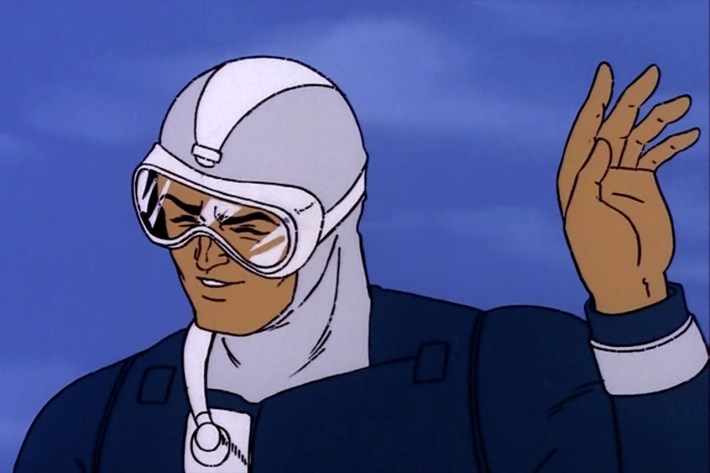
Two more things about Torpedo: his introduction is hilariously out-of-sync with his filecard, which says that he has the "personality of a cold fish." That, and the fact that Torpedo's wetsuit is completely different, makes me think that the 1983 characters weren't completely finalized when this five-parter was in production in 1982. That would also explain why Snow Job's personality doesn't vibe with his filecard. My question now is: Will their personalities change when Steve Gerber takes over in a year?
And the other thing: Torpedo is another example of G.I. Joe's diversity both on celluloid and in the recording booth. Torpedo, file name: Edward Leialoha, was born in Hawaii and depicted as of native Hawaiian descent. And he was voiced by Michael Yama, himself born in Hawaii. This is a Joe of color performed by a voice actor of color, both from Hawaii — and, off the top of my head, this is something G.I. Joe did consistently. Jinx (Japanese-American) was voiced by Shuko Akune (Japanese-American), Quick Kick (Japanese/Korean) was voiced by François Chau (Chinese/Vietnamese), and Black characters — Stalker, Iceberg, Roadblock, Doc — were voiced by Black actors — Arthur Burghardt, Kene Holliday, Buster Jones. Okay, some of those weren't off the top of my head.
I know this will elicit "so whats" from some people, but the point I'm making is this: making sure that characters from marginalized backgrounds or minority communities are portrayed by people with that lived experience is not new. G.I. Joe was out there making sure that Red Dog, a Joe from American Samoa with a total of three lines in G.I. Joe: The Movie was voiced by Poncie Ponce, another Pacific Islander. Why? I honestly don't know considering this was the 1980s and no one at home had any way of knowing anything about anyone involved in the making of any animated series, nor did they have a way to put a show on blast for whitewashing a cartoon character. The only reason I can think of is the most obvious one, the reason why this practice should be done today: it makes for a better show. It makes for richer, more authentic characters. It adds realism to a show that does things like what I'm about to describe.
The Joes, led by Torpedo, dive down deep to find heavy water, which I can only describe as a pool of water in water. They are, of course, intercepted by Cobra troops, and their skirmish awakens THE WORMS OF DEATH.
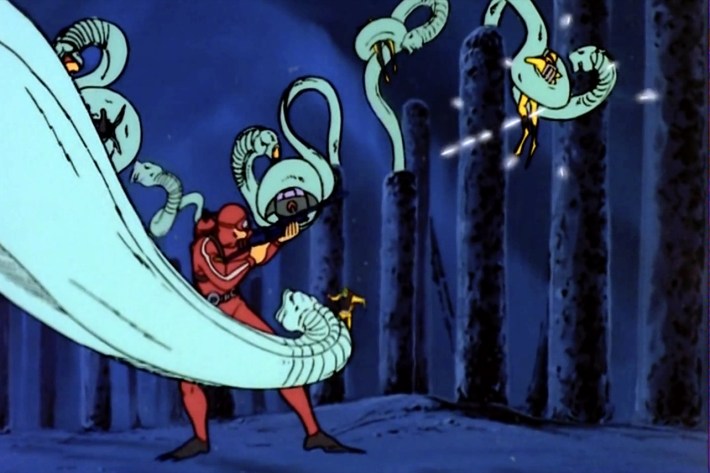
These are giant tube worms, which I regret to inform you are real. However, they only grow to lengths of 10 feet and only have a 2-inch diameter. They are not, as I mentioned earlier, the size of Acela trains, nor do they have faces, nor are they capable of feeling such intense hatred. The battle with the WORMS OF DEATH is so upsetting because of the horrific sound design. The WORMS OF DEATH screech with guttural, buzzsaw whirring that sounds like a Sleigh Bells song — like, the needle is fully in the red at all times with these things. It is terrible, and I absolutely understand why Baroness, in her first major appearance, caves in and agrees to a truce with the Joes so they can get these damn worms dealt with. They team up, split the heavy water, and go their separate ways.
I promised to write about Baroness today but ... we can wait another day. I did not expect Timber and Torpedo to take up so much of my energy, and Baroness ain't going anywhere.
Also, if I'm going to talk about Short-Fuze (Frank Welker), now's the time. This is the most screentime that this original, 1982 Joe gets in all of ARAH, and he spends it doing essentially a Laurel and Hardy routine with Steeler (Latta). The two of them have come up with a satellite that is capable of taking out the satellite that Cobra's using to — lord, it's the satellite from Episode 1, and Cobra's going to blow up New York City if the Joes don't stop it. And Short-Fuze, who is a certified math and tech nerd according to his filecard, has a plan. He also has an exaggerated I-guess-its-Chicago accent, in line with his filecard.
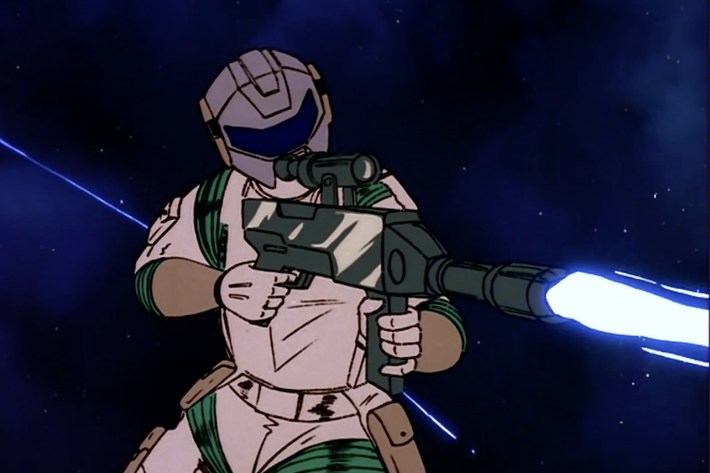
I can't stress this enough: there are three minutes left in the episode, and Ron Friedman introduces two new characters, a new doohickey, a new Cobra scheme, and a new branch of Cobra's forces: outer space troopers who do not have toy counterparts. The only reason I can think of to squeeze in this tangent would be to sell some cool Space Viper figures — but those are not a thing! It's chaotic as hell and Cobra wins, blowing up Short-Fuze and Steeler's afternoon project.
Then, with one minute left, Snake Eyes returns, Scarlett hugs him, pets Timber, and then the tin can of radiation starts spewing toxic gas everywhere. The Joes pass out, and I might too — from exhaustion.
PERSONNEL REPORT
First Appearance: Cobra Diver, Torpedo
First Line of Dialogue: Clutch, Short-Fuze, Torpedo
Peak Appearance: Cobra Diver (66 seconds), Torpedo (115 seconds)
STRAY BLASTS
Scarlett and Snake Eyes are definitely more than friends, or they were, or they're about to be. I mean, look at this.
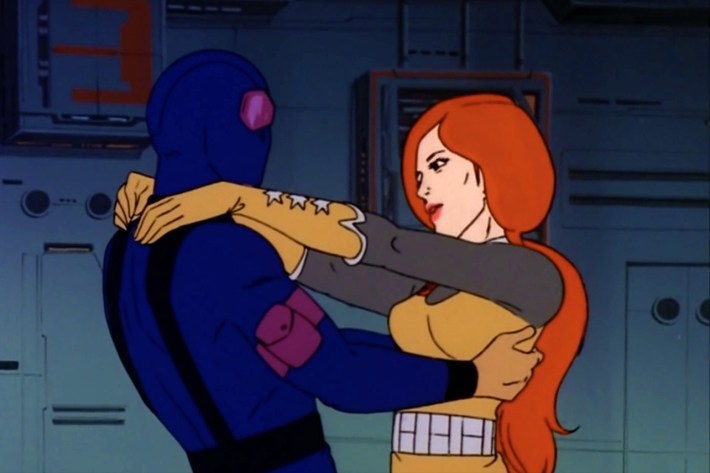
The body language, baby.
So far I'm impressed with the regional dialects and diverse casting. Breaker (Latta), from my home state of Tennessee, has a southern accent and is currently the second hottest Joe, after Snow Job. There's a lot more to talk about with Breaker and him being unrecognizable from the comics, eventually.
That being said, Clutch (Bell) is supposed to be from New Jersey and he also has a southern accent — and that may be why I could not tell Clutch and Breaker apart until, like, a month ago.
I'm eagerly awaiting a big Cobra Commander moment. My guy has been very quiet, relegated to a bit of posturing while Maj. Bludd of all people scores all of Cobra's wins.
As for Timber, the snarling Scooby-Doo to Snake Eyes' silent yet deadly Shaggy, he seems to be one of Ron Friedman's major, lasting additions to the canon. This episode aired in September 1983, but Timber wouldn't be released as an action figure sidekick until Snake-Eyes v2 in spring 1985. And as for the comic, Timber shows up in a flashback in G.I. Joe #27 (pub. June 5, 1984). I assume that the ninja having a pet wolf went over very well with the target demographic and Hasbro insisted on Timber being immortalized in plastic. However, Larry Hama did not use Timber's cartoon origin (Hama has said that he never watched the cartoon, so that tracks). Instead, Snake Eyes' 1985 filecard says he was "living an ascetic existence alone in the High Sierras with a pet wolf named Timber" when recruited, and that's what's depicted in the comics.
Snake Eyes can't talk, so, will the other Joes ever learn Timber's name?
Next time: Gung-Ho, Cover Girl, and I promise we will talk about Baroness.
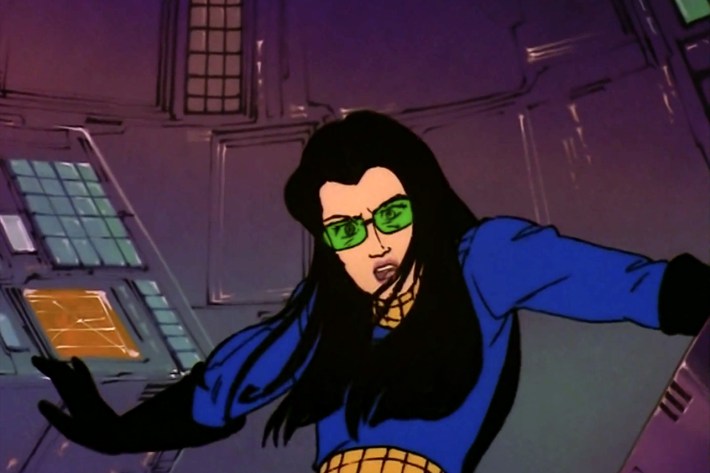
Thanks to Half the Battle, Yo Joe!, 3D Joes, Joe Guide, and Joepedia for all of the research.
Until next time, reading is half the battle!
Next: "Duel in the Devil's Cauldron"
This recap was originally accessible to paid subscribers only, and future recaps in this series are available now for paid subscribers. If you haven't already, consider supporting worker-owned media by subscribing to Pop Heist. We are ad-free and operating outside the algorithm, so all dollars go directly to paying the staff members and writers who make articles like this one possible.
